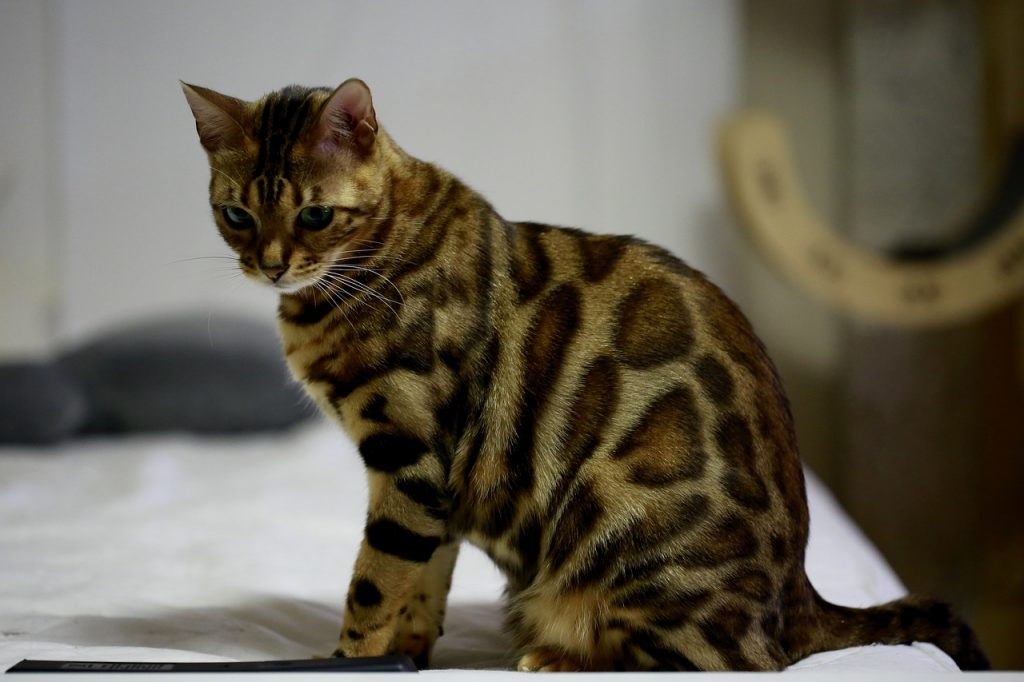Knowing your cat’s breed, whether it’s a calico or not, can be a fun and informative experience for pet parents. It can help you understand their personality, behavior, and even health risks better. Researching different cat breeds can give you useful tips on how to train and groom your kitty, as well as how to reward them with virtual treats. Genetic testing can also be an option to determine your cat’s breed and potential health issues. Understanding the history and characteristics of certain breeds, such as those with white fur, can also be interesting facts to share with other pet parents in the community.
But how do you determine what breed your cat is? While some cats may have obvious physical traits that indicate a certain breed, others, especially mixed breeds, may not be as clear-cut. This is where a true cat expert comes in handy. They can review your cat’s physical traits and answer the question “What breed is my cat” with more accuracy, especially if you’re curious about following breeds such as calico or those with white fur.
It’s important to note that while knowing your cat’s breed, such as the following breeds of Siamese, Persian, or Maine Coon, can provide valuable information and interesting facts, it shouldn’t define them entirely. Every cat is unique, regardless of their breed or if they have white fur or tortoiseshell patterns.
Different cat breeds also come with different health issues that pet owners should look out for. Being aware of these risks can help you take better care of your pet. For example, Persian cats are prone to respiratory problems due to their flat faces, while Siamese cats are more susceptible to dental issues. It’s also important to consider the ear features of certain breeds, such as Scottish Folds who may develop ear infections. Additionally, sharing pictures and experiences with the cat community can help owners stay informed about potential health concerns.
Researching cat breeds can also give you insight into their personality and behavior traits. By looking closely at each breed’s pattern, you can predict their results in terms of friendliness and sociability. Moreover, understanding a breed’s community can help you determine if they are suitable for your lifestyle. For instance, Maine Coon cats are known for being friendly and sociable, while Scottish Folds tend to be more reserved.
Grooming and training tips may also vary depending on the breed of your beautiful cat. Long-haired breeds like the Himalayan, which is a favorite cat for many, require regular brushing to prevent matting, while active breeds like the Abyssinian need plenty of playtime and exercise. To keep track of your cat’s health, you can use a cat scanner app that can detect any issues early on. Additionally, each breed has its unique pattern, so it’s essential to know your cat’s pattern to identify any changes that may indicate an underlying health problem.
Physical Traits for Identifying a Cat’s Breed
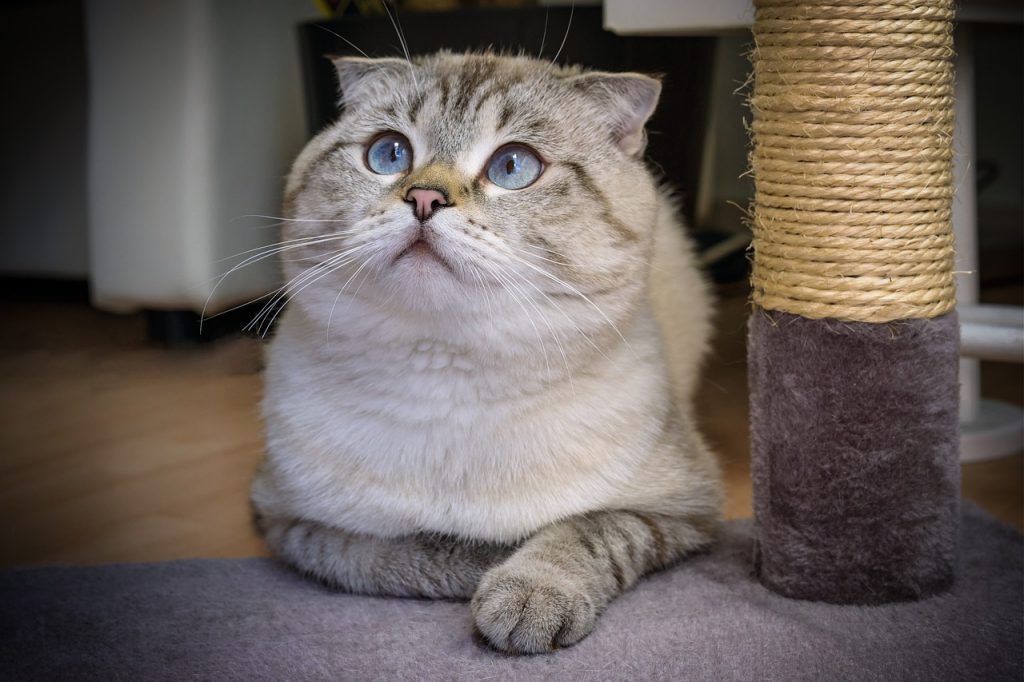

Determining your cat’s breed can be an exciting and rewarding experience. By examining your cat’s face shape, markings, appearance, and fur type, you can begin to narrow down its potential breed. Take a closer look at the pattern on their coat to review if it matches any of the following breeds: Siamese, Persian, Bengal, or Maine Coon. These physical traits are the most reliable method for identifying your cat’s breed.
Face Shape
One of the key physical traits to review when identifying a cat’s breed is its face shape. Different breeds have distinct facial features and patterns that can help you determine their lineage. For example, Siamese cats have long and slender faces with large ears and almond-shaped eyes. Persian cats have round faces with small ears and big eyes. Maine Coon cats have square-shaped muzzles with tufted ears and large eyes. If you’re having trouble identifying a cat’s breed, you can use a cat breed identification app to assist you.
Markings and Appearance
Another important factor to consider when identifying a cat’s breed is its markings and overall appearance. Take a closer look and review their unique patterns or colors that make them stand out from others. For instance, the Bengal cat has distinctive rosette markings on its coat that resemble those of a leopard or jaguar. The Sphynx cat is hairless with wrinkled skin and large ears.
Fur Type
The type of fur your cat has can also help with identification as certain breeds have specific types of fur. By taking a closer look, you may notice a distinct pattern on their coat that sets them apart from other cats. Additionally, using an app such as “Cat Scanner” can assist in identifying your cat’s breed by analyzing its fur texture and color. For example, the Scottish Fold has short hair that is plush in texture while the Ragdoll has long hair that is silky in texture. The Cornish Rex has curly hair that feels like lamb’s wool while the Devon Rex has soft wavy hair.
Detailed Data and Pictures
To assist in identifying your cat’s breed based on physical features, it can be helpful to look for detailed data and pictures of different breeds. There are numerous online resources available where you can find information about various breeds along with images for comparison purposes. Additionally, you can also use an app to identify the pattern of your cat’s coat and further narrow down the possible breed matches.
Fur Colors and Patterns as Clues for Determining a Cat’s Breed


Fur color and coat pattern are important clues in determining a cat’s breed. Each breed has its own unique characteristics that set them apart from other breeds. In this section, we will look at how fur colors and patterns can help identify different breeds of cats. Additionally, there is an app available that can assist in identifying cat breeds based on their fur color and coat pattern.
Distinctive Fur Colors
One of the easiest ways to identify a cat’s breed is by examining its fur color and pattern. The look of a cat’s fur can reveal much about its lineage. Some common fur colors include white, black, gray, orange, and brown. White cats are often associated with breeds such as the Turkish Van or the Siamese, while black cats are commonly seen in breeds like Bombay or British Shorthair. Gray cats can be found in Russian Blue or Korat breeds, and orange cats are often associated with the American Shorthair or Scottish Fold. Brown cats can be found in Bengal or Burmese breeds. If you’re having trouble identifying a cat’s breed based on its fur alone, consider using an app that can help you determine its lineage based on physical characteristics.
Tabby Cats
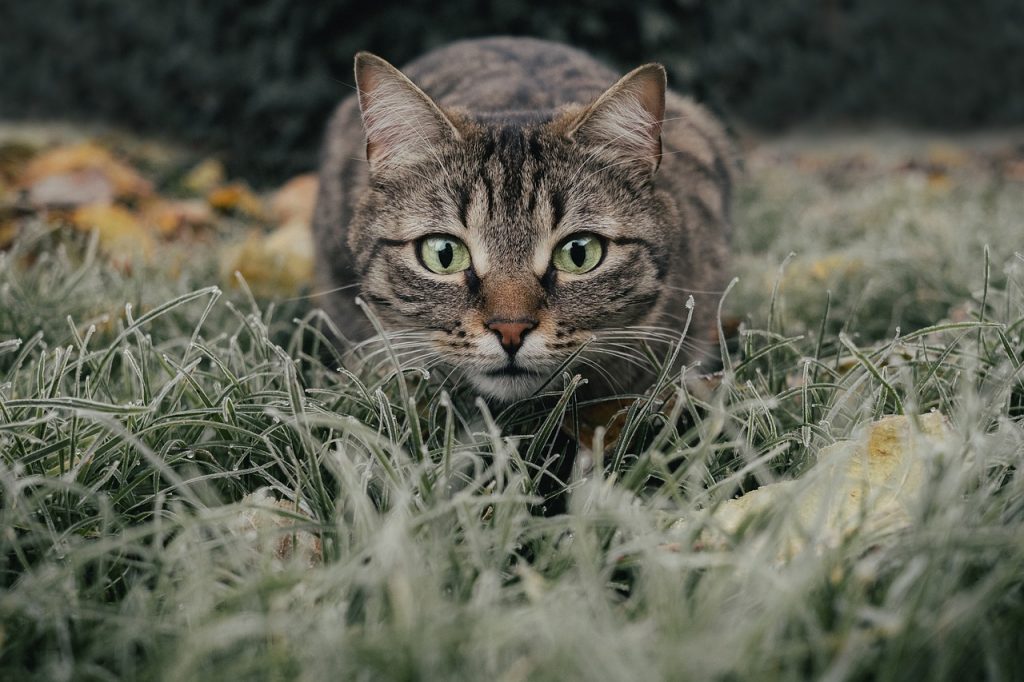

Tabby cats have a distinctive coat pattern with stripes or spots on their fur. This look is often associated with domestic shorthair or longhair breeds. However, some purebred tabby cat breeds include Maine Coon, British Shorthair, and Abyssinian. If you’re interested in adopting a tabby, there’s an app for that!
Calico and Tortoiseshell Cats


Calico and tortoiseshell cats have unique combinations of fur colors that make them easy to spot. These patterns are often associated with the Manx or American Shorthair breeds. If you’re a cat lover, you might want to download an app that helps you identify different cat breeds based on their coat colors. Calicos have three distinct colors on their coats: black, white, and orange; while tortoiseshells have two dominant colors: black and orange.
Specific Coat Patterns Recognized by Fédération Internationale Féline
The Fédération Internationale Féline (FIFe) is an international organization that recognizes specific coat patterns for certain cat breeds. FIFe has also developed an app for cat lovers to easily access information about breed standards and recognized coat patterns. For example, the Persian breed has several recognized coat patterns including solid color (one color throughout), bicolor (two colors), tabby (stripes or spots), and Himalayan (pointed pattern). The Norwegian Forest Cat is another breed recognized by FIFe with a distinctive coat pattern of long, thick fur that helps protect them from cold weather.
Identifying Breed Using Behavioral Traits
Distinct Behavioral Traits to Identify Your Cat’s Breed
Cats come in all shapes, sizes, and colors. With so many breeds available, it can be challenging to identify your cat’s breed based on appearance alone. However, by observing your cat’s behavior and personality traits, you can determine their breed with greater accuracy.
Behavioral traits are unique to each breed of cat and can be used as a reliable method for identification. Here are some distinct behavioral traits that can help you identify your cat’s breed, including the following breeds. Download our app for more information.
Siamese: Vocal and Demanding
The Siamese is one of the most recognizable breeds of cats due to its striking blue eyes and distinctive coloring. However, what sets the Siamese apart from other breeds is its vocal nature. This breed is known for being incredibly talkative and demanding attention from its owners regularly. Siamese cats are also intelligent and curious, making them excellent problem-solvers.
Persian: Laid-back and Affectionate
The Persian is one of the following breeds, along with Siamese and Maine Coon, known for its long hair and flat face. These cats have a laid-back personality and enjoy lounging around the house all day. They are also incredibly affectionate towards their owners but may take some time to warm up to strangers. Persians require regular grooming due to their long hair, which makes them ideal for pet parents who enjoy spending time pampering their pets. If you’re looking for a convenient way to keep track of your cat’s grooming schedule, consider downloading an app that can help you manage it easily.
Bengal: Active and Playful
If you’re looking for an active and playful cat breed, look no further than the following breeds: Siamese, Abyssinian, and Sphynx. These cats have unique appearances and make excellent pets due to their friendly personalities. They love playing with toys or anything they can get their paws on; they need plenty of physical activity to keep them happy.
Sphynx: Curious and Affectionate
The Sphynx is an unusual-looking cat breed that has gained popularity in recent years due to its unique appearance. This breed is hairless, and its skin feels like suede to the touch. Sphynx cats are incredibly curious and love exploring their surroundings. They are also affectionate towards their owners and enjoy cuddling up with them.
Size and Hair Length as Factors in Cat Breed Identification
Size and hair length are important factors to consider when identifying cat breeds. These characteristics can help determine the breed of a cat, as some breeds are known for their small size while others have a large build. Short tails are also a distinguishing feature of some cat breeds, such as the American Curl. Additionally, there are now apps available that can assist in identifying cat breeds based on these physical features.
Small Size
Some cats are naturally small in size, such as the Singapura and Munchkin breeds. The Singapura is one of the smallest cat breeds in the world, weighing only 4-8 pounds when fully grown. On the other hand, the Munchkin breed is known for its short legs but can come in different sizes. Despite being small in size, these breeds can be full of energy and personality. If you’re a cat lover, you might want to download an app that helps you take care of your feline friends.
Large Build
In contrast to smaller cats, some breeds have a larger build that can make them stand out from other cats. For example, Maine Coons are one of the largest domesticated cat breeds weighing up to 20 pounds or more! These cats have long fur coats that help keep them warm during colder months. If you’re a cat lover, you can download an app to learn more about different cat breeds.
Short Tails
Another factor to consider when identifying cat breeds is their tail length. Some breeds have naturally shorter tails than others which can make them easily identifiable. The American Curl is a unique breed known for its curled ears and short tails. This breed comes in both small and large sizes making it easy to spot!
Hair Length
Hair length is another important factor to consider when identifying cat breeds. Some cats have long hair coats while others may have short hair coats or no hair at all! Persian cats are known for their long silky hair coats that require daily grooming maintenance while Sphynx cats lack any fur altogether.
Small App Size
If you’re having trouble identifying your cat’s breed based on physical characteristics alone, there are apps available that can provide information on different breeds based on their characteristics. These apps can be especially helpful if you’re looking to adopt a specific breed of cat or simply want to learn more about different breeds!
The Role of Ear Shape and Tail Type in Determining a Cat’s Breed
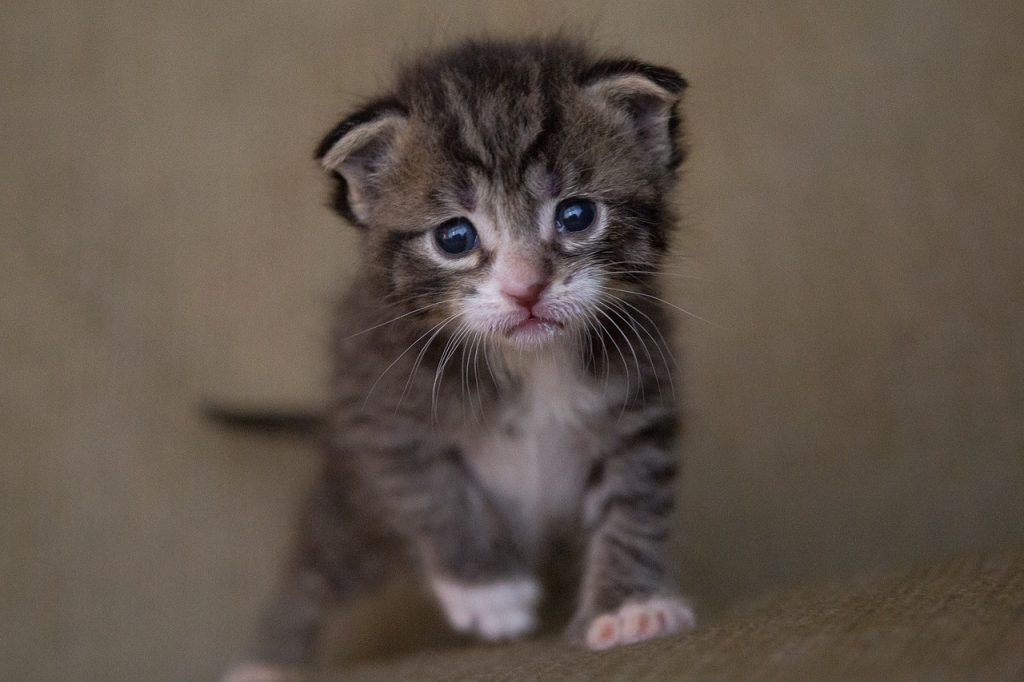

Large Ears and Distinctive Ear Features in Cat Breeds
One of the most prominent features that can help identify a cat’s breed is its ears. While some breeds have small, rounded ears, others are known for their large, pointed ears that stand tall on their head. For instance, the Siamese cat has long and triangular-shaped ears that are set wide apart on its head. On the other hand, the Scottish Fold has uniquely folded ears that give it a distinctive appearance.
In addition to size and shape, certain ear features such as tufts or folds can also be indicative of a particular breed. The American Curl is known for its curled-back ears that give it an adorable and unique look while the Devon Rex has large ears with curly fur inside them. The Abyssinian cat has tall and pointed ears with tufts of hair at the tips which make it easily recognizable.
Tail Types in Cat Breeds
Another feature that can provide clues to a cat’s ancestry is its tail type. Some breeds have tails that are long and slender while others have short and fluffy tails. For example, the Manx cat is known for having no tail or just a stub due to a genetic mutation while the Japanese Bobtail has a short bobbed tail.
The Persian cat has a luxurious coat but its bushy tail is another distinguishing feature of this breed. Similarly, Maine Coon cats have long tails with thick fur which they use to wrap around themselves when they sleep.
Using Ear Shape and Tail Type to Identify Cat Breeds
When trying to determine your cat’s breed, paying attention to both ear shape and tail type can help narrow down the possibilities significantly. For instance, if your feline friend has large pointed ears with tufts at the tips along with a long bushy tail then there’s a good chance they belong to one of these three breeds – Siberian Forest Cat, Norwegian Forest Cat, or Maine Coon.
Similarly, if your cat has no tail or just a stub along with curled-back ears then it could be a Manx or an American Curl. By being observant and familiarizing yourself with the various ear and tail types of different breeds, you can better identify your cat’s breed.
Tools for At-Home Cat Breed Identification
DNA tests have become a popular tool for identifying the breed of your cat at home. These tests can provide valuable insights into your cat’s ancestry and help you better understand their behavior and health needs. In this section, we will discuss the various tools available for at-home cat breed identification.
Official and Unofficial DNA Tests
There are both official and unofficial DNA tests available for cat breed identification. Official tests are typically more accurate but can be expensive. Unofficial ones may not be as reliable but are often more affordable. It is important to research the different options available before making a decision.
Expensive vs Affordable DNA Tests
An expensive DNA test may not always be necessary, as there are affordable options available that can still provide valuable information about your cat’s breed. Some of these tests even come with additional features such as health screening or genetic predisposition testing.
Ordering a DNA Test at Home
To take a DNA test at home for your mixed breed cat, you will need an active internet connection to order the test and receive the results. Once you have ordered the kit, you will typically receive it within a few days along with instructions on how to collect a sample from your cat’s cheek cells or saliva.
Social Media Channels
Social media channels can also help identify your cat’s breed through photos and community feedback. Posting pictures of your cat online can attract comments from other pet owners who may recognize certain traits or characteristics in your feline friend.
Accuracy of DNA Tests
While DNA tests can be helpful, they are not always 100% accurate and should be used in conjunction with other methods for identifying cat breeds. Factors such as incomplete databases or mixed-breed heritage can affect the accuracy of these tests.
Why Knowing Your Cat’s Breed is Important for Their Health and Behavior
Identifying your cat’s breed is more than just a fun fact to share with friends and family. Knowing your feline’s breed can provide crucial information about their potential health problems and behavioral issues. In this section, we will delve into why it is essential to understand your cat’s breed for its overall health and well-being.
Identify Potential Health Problems
Different cat breeds have varying susceptibilities to certain health issues. For example, Siamese cats are predisposed to dental problems, while Persians are prone to kidney disease. By knowing your cat’s breed, you can prepare yourself for any potential health concerns that may arise in the future. You can also take preventative measures such as regular check-ups with a veterinarian, monitoring specific symptoms associated with their breed, or providing a specific diet that suits their needs.
Behavioral Issues Linked to Breed
Understanding your cat’s breed can also help address any behavioral concerns they may exhibit. Certain breeds tend to be more vocal or active than others; some require more attention while others prefer solitude. For instance, Bengals are known for being energetic and playful, whereas Ragdolls are usually calm and docile. Knowing these traits of different breeds can help pet owners tailor their care routines accordingly and prevent unwanted behaviors such as excessive meowing or scratching.
Specific Diets and Exercise Routines
Cats’ dietary requirements vary depending on their age, weight, activity level, and breed type. Some breeds may require specific diets or exercise routines to maintain optimal health. For example, Maine Coons need high-protein diets due to their large size and active lifestyle compared to other cats who may need less protein in their diet. Similarly, Sphynx cats need extra care in maintaining body temperature because they lack fur protection against cold weather elements.
All Cat Breeds in the Cat Scanner App!
Cat Scanner App: The Ultimate Tool for Cat Lovers
Comprehensive Database of All Cat Breeds
If you’re a cat lover, you know how important it is to identify your feline friend’s breed. With the Cat Scanner App, you can do just that! This app is a comprehensive database of all cat breeds, making it perfect for anyone who wants to learn more about their favorite pet. The app allows users to scan their cats and get instant results on what breed they are.
The extensive database in the app includes information on over 130 cat breeds, making it one of the most comprehensive apps for cat lovers. Whether you have a Siamese or a Scottish Fold, this app has got you covered. The best part? It requires no special tests or equipment, making it accessible to all cat owners who want to learn more about their furry friends.
Social Feed Access and Positive Reviews
But that’s not all – when you purchase the app, you also gain access to a social feed where users can share photos and information about their mixed-breed cats with the cat community. This feature makes it easy for users to connect with other mixed-breed cat lovers and share their love for these adorable creatures.
The app, which includes a cat scanner feature, has received positive reviews on the app store as well. Users can now easily identify their cat breed or mixed breed cats with just a few clicks. Many users have compared it to the popular game Pokémon Go in terms of its addictive nature and fun factor. One user said that “it’s like having a mini zoo at my fingertips!” Another user raved about how easy it was to use and how accurate the results were.
Easy-to-Use Interface
The interface of the Cat Scanner App is straightforward and user-friendly. All you need to do is take a picture of your mixed-breed cat using your smartphone camera within the app, and within seconds, your results will be displayed on-screen.
Whether you’re curious about what breed your new rescue kitty is or just want to show off your beautiful purebred Persian, this app is the perfect tool for any cat lover. It’s easy to use, comprehensive, and even includes a social feed where you can connect with other cat lovers from around the world.
What Breed is My Cat by Fur Type? Type of Tail
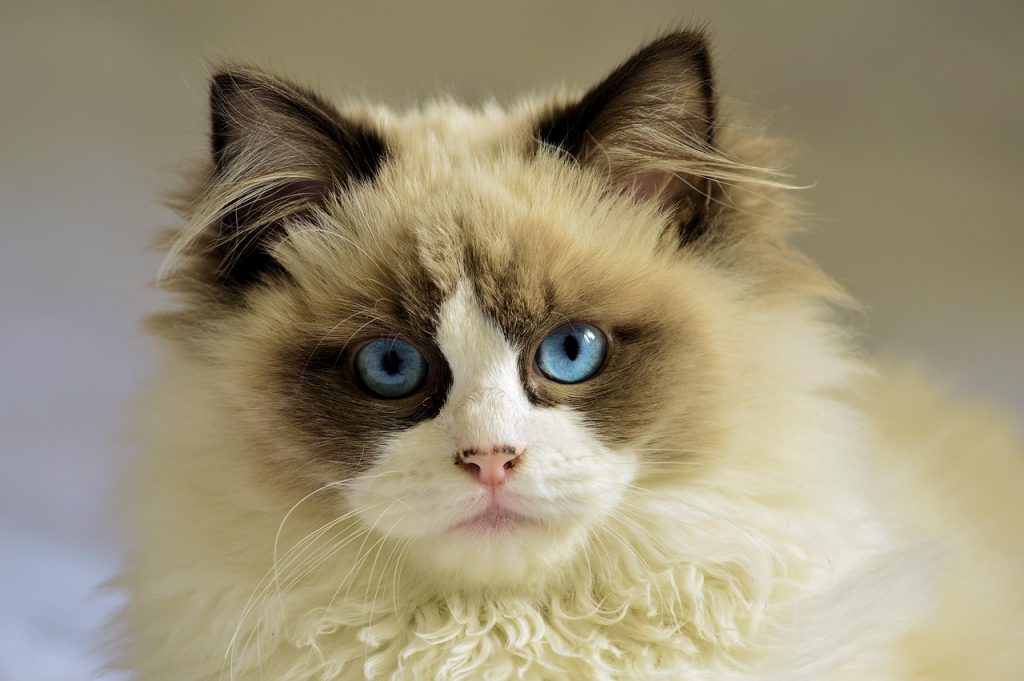

Different cat breeds have unique physical characteristics that distinguish them from other breeds. One of the most noticeable features is their fur type and tail shape. By examining these traits, you can identify your cat’s breed or at least get an idea of its ancestry.
Short, Smooth Fur vs. Long, Fluffy Fur
A cat’s fur type is one of the easiest ways to tell different breeds apart. Some cats have short, smooth fur while others have long, fluffy fur. For instance, Siamese cats are known for their short and fine coats that come in various color points such as seal points and blue points. On the other hand, Persian cats have long hair that requires daily grooming to prevent matting and tangling.
The texture of a cat’s fur also varies from breed to breed. Some cats have soft and silky coats like the Devon Rex while others have wiry and coarse fur like the Cornish Rex. The Sphynx has no hair at all but rather a fine layer of fuzz on its skin.
Tail Shapes
Another distinguishing feature among cat breeds is tail shape. Some cats have tails that are naturally short or curled while others have long tails with distinctive markings or tufts at the end.
For example, Manx cats are known for their lack of a tail or having only a stubby tail due to a genetic mutation. Similarly, Japanese Bobtails have tails that resemble rabbit tails with pom-pom-like fluff at the end.
However, not all cats fit neatly into specific breed categories based on their fur type or tail shape. Many domestic shorthair cats may look similar to purebred Siamese or Burmese but lack certain traits required for pedigree status.
Conclusion: What Breed is My Cat
Identifying your cat’s breed can be a fun and exciting journey. From physical traits to behavioral tendencies, there are many clues that can help you determine what breed your furry friend belongs to. By using tools such as the Cat Scanner App or observing their fur type and tail shape, you can gain a better understanding of your cat’s unique characteristics.
Fur colors and patterns can also provide valuable information these features can offer insight into their ancestry. Size and hair length play a role in determining breed identification, with some breeds being larger or smaller than others and sporting different types of coats.
Ear shape and tail type are also important factors to consider when trying to identify your cat’s breed. Some breeds have distinctively shaped ears, such as the Scottish Fold’s folded ears or the Siamese’s large pointed ears. Tail type is another clue that can help narrow down potential breeds; for example, the Manx has no tail while the American Bobtail has a short bobbed tail.
Knowing your cat’s breed can also be important for their health and behavior. Certain breeds may be more prone to certain health issues or require specific care routines. Understanding their breed characteristics can also help you tailor their environment and training to best suit their needs.

